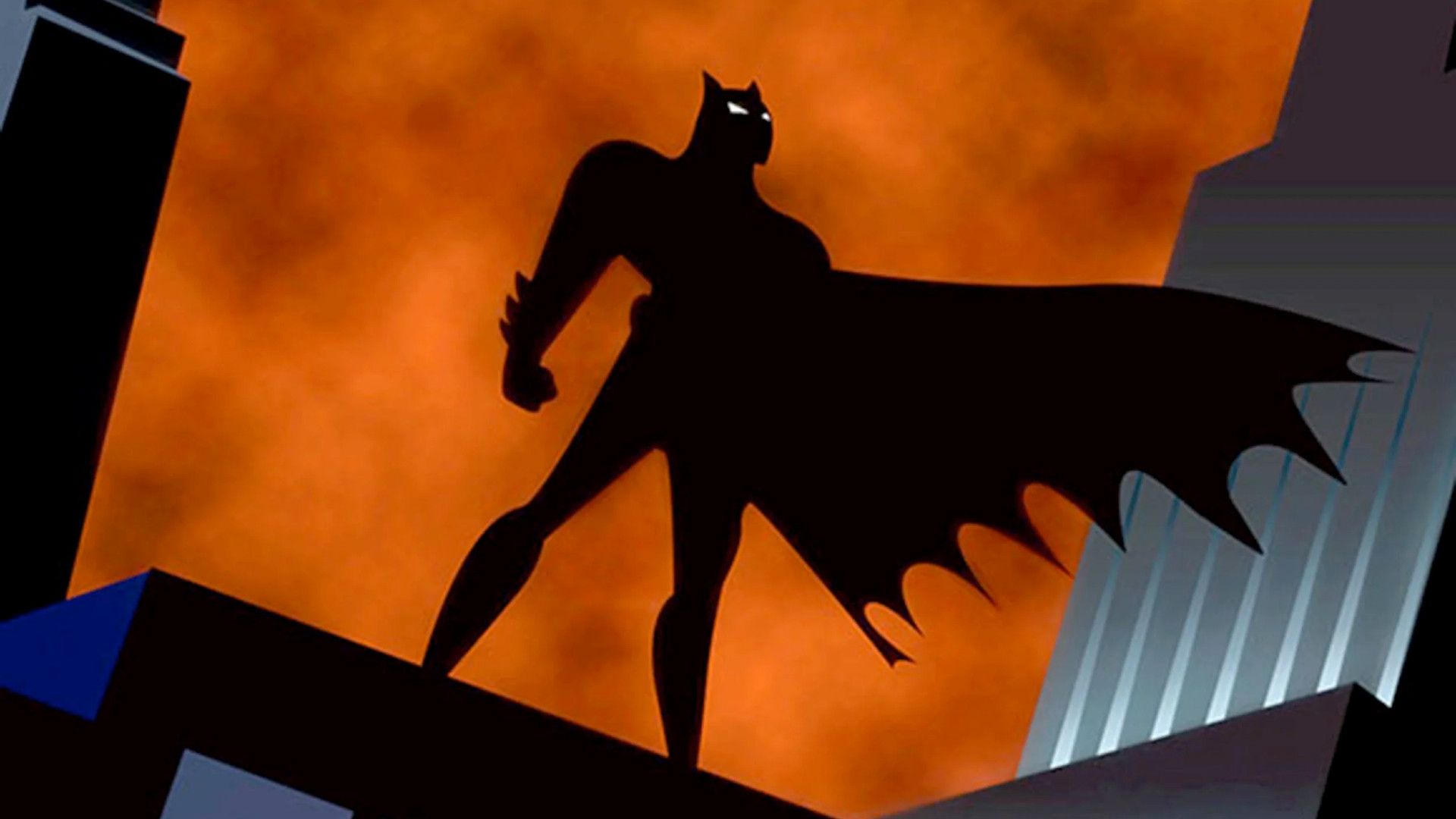
Batman: The Animated Series was groundbreaking for its time, offering surprisingly mature and dark stories for a children’s show. It redefined the superhero genre with its emotional complexity and gripping psychological drama. Beyond its distinctive and memorable art style, the series featured moments of intense darkness that left a lasting impression on audiences.
Those scenes from Batman: The Animated Series weren’t simply disturbing—they transformed the show into a classic, deeply emotional tragedy. The creators weren’t afraid to tackle difficult themes like trauma, what makes a person who they are, loss, and the terrifying realities of crime in Gotham City.
When it was at its finest, the show didn’t use darkness simply to be shocking. Instead, it explored moments of real emotional honesty to make its characters more complex and relatable. This is just one of the reasons why Batman: The Animated Series had such a lasting impact on superhero shows.
Joker’s Road Rage In “Joker’s Favor”
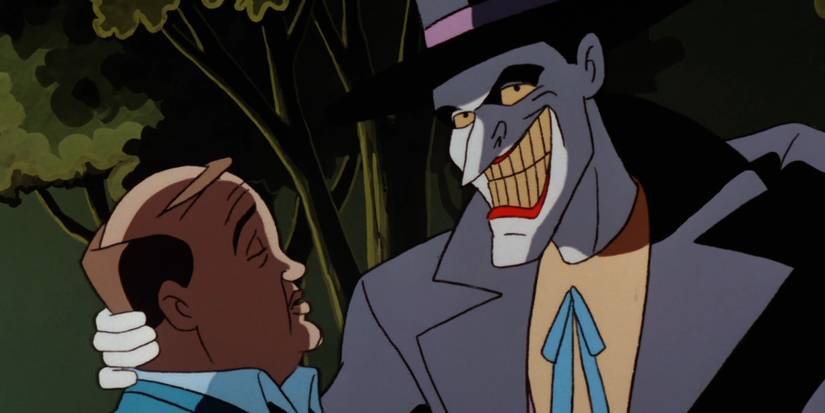
The first season of Batman: The Animated Series, specifically episode 22, “Joker’s Favor,” really showcases how frightening the Joker can be. The story begins when a man named Charlie Collins unintentionally insults the Joker while driving. What happens next is genuinely terrifying – the Joker begins stalking Charlie, constantly reappearing with unsettling composure no matter how hard Charlie tries to escape.
The Joker’s composure is actually more frightening than if he were simply angry, creating a sense of unavoidable dread. This unsettling calmness is what makes him truly menacing. It’s reminiscent of a toned-down version of the classic horror story about an unstoppable pursuer, similar to tales found in The Twilight Zone and All Hallows’ Eve.
Joker ultimately forces Charlie to reveal his name, then casually threatens to call in a favor sometime in the future, essentially controlling Charlie’s destiny. For the next two years, Charlie lives in constant fear of Joker’s return. This scene powerfully demonstrates Joker’s ability to terrify and control regular people, leaving viewers deeply disturbed.
Poison Ivy’s Botanical Family In “House & Garden”
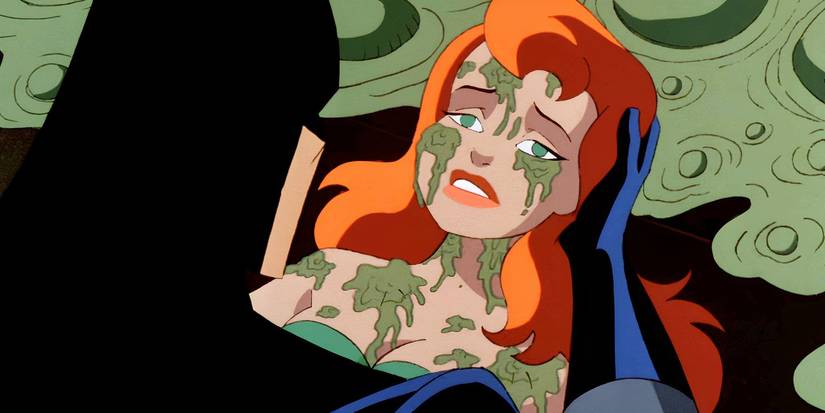
I was completely floored when “House & Garden” started! The idea that Poison Ivy had turned over a new leaf, settling down into a normal family life, was so unexpected. But that sweetness quickly turned unsettling, making this episode one of the most disturbing and psychologically intense in Batman: The Animated Series. It seemed like a perfect little family – a husband and two sons – until the horrifying truth about their plant-based nature was revealed. It really stuck with me!
These plant-human creations are deeply disturbing and sad. It’s even more unsettling to learn that Ivy made them because she wanted a life she couldn’t have. While her desire is heartbreaking, the strange and unnatural beings she created are truly frightening.
The show presents a unsettling combination of a mother’s longing and twisted scientific experiments. Seeing her “children” turn into plants is arguably the most disturbing image in the episode. Ivy’s frantic efforts to create a happy life actually reveal how deeply lonely she is, making the episode deeply haunting and affecting on several levels.
Joker’s Improved Laughing Gas In “The Laughing Fish”

“The Laughing Fish” is based on a particularly chilling Joker storyline from the comics, and this episode of Batman: The Animated Series doesn’t hold back. The Joker poisons Gotham’s fish, causing them to permanently wear a grotesque, grinning expression. He does this to bizarrely try and claim ownership of the image, forcing the government to recognize his twisted “copyright.”
The situation becomes much more dangerous when the Joker starts threatening to kill anyone who opposes him. He releases a more potent version of his signature gas, a deadly chemical compound. While his earlier gas simply caused uncontrollable laughter in the citizens of Gotham (as seen in Batman: The Animated Series), this new formula is lethal. Victims are left with a permanent, Joker-like grin, including yellowed eyes and teeth.
This situation is deeply disturbing. Seeing the victims laugh as they succumb to the Joker’s attacks highlights just how cruel he is. This moment wasn’t just about simple crime or showmanship; it showed a new level of evil.
Robot Batman Has An Existential Crisis In “His Silicon Soul”
![]()
The Batman: The Animated Series episode “His Silicon Soul” (season 1, episode 62) tackles surprisingly deep and unsettling themes for a superhero cartoon. What starts as a typical rematch with a robotic version of Batman—created by the villain HARDAC—quickly becomes a poignant story about an android grappling with questions of who it is and what’s right and wrong.
The robot genuinely believes it is Batman, which causes real confusion and pain. As it learns about HARDAC’s last instruction, it wrestles with whether it’s acting on programming or making its own choices. This internal battle is deeply moving, because the android truly lives by what it understands to be Batman’s code of honor.
The robot’s inner struggle reflects a very human search for meaning, making it hard to distinguish between the machine and a person. Its self-sacrifice at the end is unexpectedly moving. When Batman realizes the machine had something like a soul, the full weight of the tragedy hits home – a being with good intentions was always destined to fail.
Robin Almost Kills His Parents’ Killer In “Robin’s Reckoning”
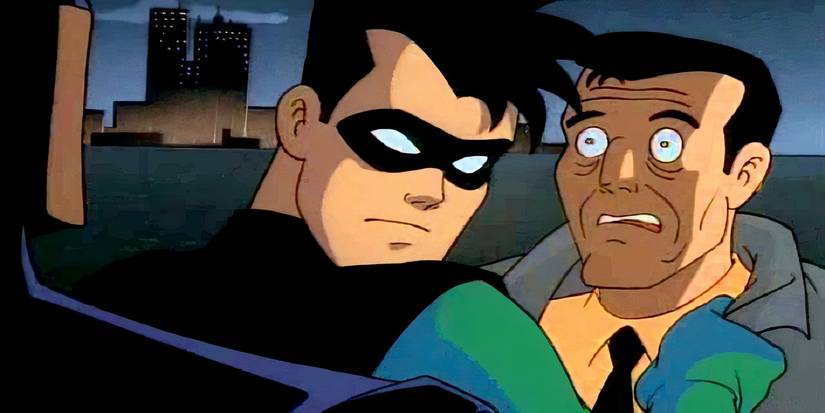
“Robin’s Reckoning” is widely considered one of the best episodes of Batman: The Animated Series. It powerfully combines heartfelt storytelling with intense psychological drama. In season one, episodes 32 and 33 reveal to Dick Grayson that Batman is hunting Tony Zucco, the man who killed his parents, causing Dick to relive his painful loss.
The memories of the circus tragedy are deeply painful, and they fuel Robin’s intense anger. As he hunts down Zucco, this rage leads him down a dangerous road. His journey isn’t simply about getting revenge; it’s a battle with himself – can he remain true to Batman’s values when his own feelings are so strong?
The scene is incredibly tense as Robin confronts Zucco, fully prepared to take his life. It’s a powerful moment where we see Robin grappling with a huge moral dilemma. Although Batman stops him, the scene powerfully demonstrates how quickly suffering can change someone, even a hero. It’s unsettling how close Robin came to crossing the line, and it reveals just how much his past trauma still affects him.
Batman Sees His Father As A Giant Monster In “Nothing To Fear”

“Nothing to Fear” features one of the most unsettling moments in Batman: The Animated Series. When exposed to Scarecrow’s fear toxin, Batman experiences terrifying visions that tap into his most personal and hidden fears. The scene that particularly shocked audiences is a nightmare where Bruce sees his father, Thomas Wayne, as a huge, frightening ghost.
Thomas’s harsh judgment of his son – calling him a failure – cuts deeper than any physical harm. This horrifying change embodies a mix of guilt, fear, and deep self-hatred. Because Bruce has always strived to live up to his parents’ memory, this hallucination is especially crushing for him.
The scene reveals just how vulnerable Batman is despite his calm and controlled demeanor. It’s a surprisingly emotional moment that deeply affects viewers. The impact is heightened when Batman confesses he occasionally wonders if his critics are right. We rarely see him this exposed, and his fear of failing to live up to his father’s expectations becomes a powerfully unsettling part of the story.
Batman Watching His Parents Die Again in “Dreams in Darkness”
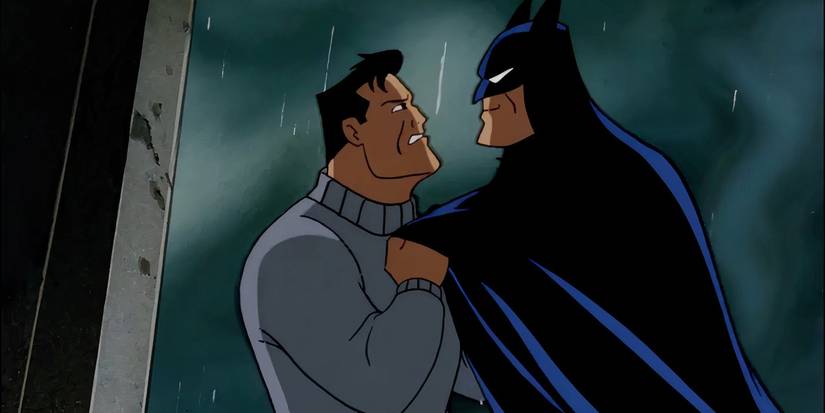
In the Batman: The Animated Series episode, “Dreams in Darkness,” Batman is exposed to Scarecrow’s fear toxin again, but this time, the psychological effects are far more intense. He’s committed to an institution and, unable to prove he’s still sane, begins experiencing disturbing visions that blur the line between what’s real and what’s a nightmare.
Honestly, the worst part for me is when Bruce is forced to experience his parents’ murder all over again. It’s not just the memory itself, but the way the toxin twists it, making it even more disturbing and unforgettable. It really hits you how deeply that trauma still affects him, even after all he’s done as Batman. It’s a brutal reminder that wound never truly healed.
This is a rare instance where Batman is truly helpless, trapped by the devastating trauma of his past. Seeing the tragic event unfold again and again highlights the deep psychological scars he still carries. It’s a stark reminder that even Batman can’t escape his nightmares.
Baby Doll’s Breakdown in “Baby-Doll”

The episode “Baby-Doll” is a particularly moving story from Batman: The Animated Series. Initially, the villain Mary Dahl seems strange and silly. However, the episode quickly reveals a deeply sad truth: she suffers from a rare condition that prevents her body from developing, keeping her trapped in the form of a child.
Throughout the story, Mary’s feelings of loneliness and frustration grow increasingly intense. The turning point comes when she confronts a warped reflection in a funhouse mirror, leading to a deeply upsetting emotional breakdown. Seeing what she perceives as her adult self for the first time, Mary is overcome with despair and begins shooting at the image – a representation of the person she feels she can never be.
The scene is incredibly powerful and emotionally resonant, showing years of hidden pain suddenly erupting. Seeing her break down and cry in Batman’s arms is heartbreaking. It’s a rare moment in Batman: The Animated Series that so effectively portrays deep psychological distress, making it one of the show’s most memorable and unsettling scenes.
Clayface’s Agonizing Mutation in “Feat of Clay, Part II”
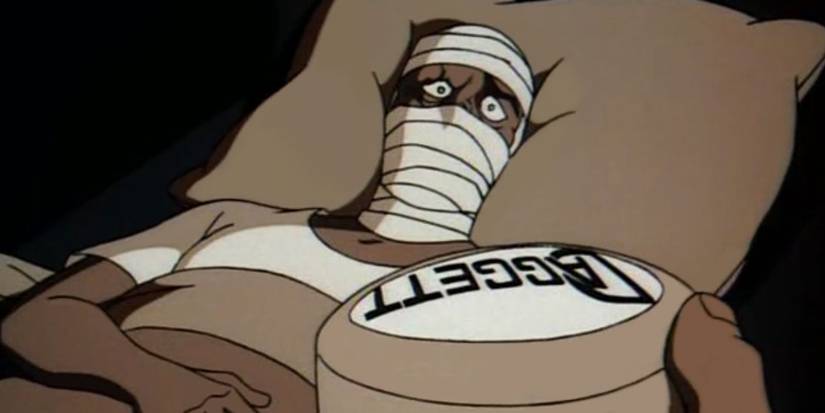
The way Clayface transforms in the first season of Batman: The Animated Series, specifically the episode “Feat of Clay, Part II,” is still one of the most unsettling animated moments in the show. As Matt Hagen changes into Clayface, the animation vividly shows his painful and horrifying physical distortion – he’s stretched, melted, and reshaped against his own will.
The truly frightening part isn’t just how it looks, but the disturbing sight of someone losing control of their own body. It’s like something you’d see in a scary movie made for adults, and it’s surprisingly intense for a children’s show. The character’s screams and obvious fear make the whole experience deeply upsetting.
As his body fails, so does his mind, making his situation deeply tragic – he never asked for this. Clayface’s eventual acceptance of his monstrous appearance is equally unsettling. The story shifts from a typical villain origin to a moving exploration of who we are, what we lose, and the pain of becoming someone – or something – we don’t recognize.
Mr. Freeze’s Tragic Coma Revelation in “Heart of Ice”
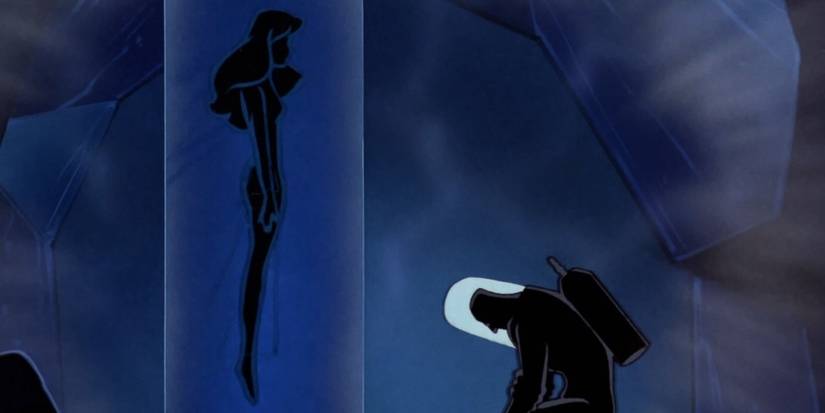
“Heart of Ice” is often considered a standout episode of Batman: The Animated Series. The most memorable and heartbreaking part is learning that Victor Fries put his wife, Nora, in a frozen sleep because of his grief and desperation. The image of Nora encased in ice is deeply unsettling and powerfully represents the extent of Victor’s emotional pain.
You know, rewatching the Mr. Freeze story, it really hit me differently this time. He’s not just some bad guy trying to take over Gotham. He’s actually a deeply tragic character, totally wrecked by grief over losing his wife. And what makes it even worse is finding out it wasn’t just fate—it was corporate greed that messed up his attempts to save her. Seeing Victor become Mr. Freeze isn’t about villainy, it’s about a broken heart responding to something utterly devastating.
The scene powerfully shows how easily love can be broken by tragedy and scientific obsession. The character’s last speech, delivered in a flat, emotionless voice, emphasizes the deep sadness of the situation. The true darkness isn’t in any action, but in the overwhelming grief of the character—a pain that never goes away in Batman: The Animated Series.
Read More
- Прогноз криптовалюты UNI: прогнозы цены UNI
- Серебро прогноз
- Золото прогноз
- Positive Technologies акции прогноз. Цена акций POSI
- How Travis Kelce Reportedly Pulled Off His Sweet Proposal To Taylor Swift: ‘He Knew He Wanted To Marry Her’
- Прогноз криптовалюты XLM: прогнозы цены XLM
- Please Don’t Destroy Reacted To The SNL Breakup In A Heartfelt And Hilarious Way That Involves Winnie The Pooh (And I Wouldn’t Expect Anything Less)
- НЛМК акции прогноз. Цена акций NLMK
- Christina Haack Left Her Husband In The Middle Of Filming The Flip Off. After Big Payment, He’s Not Holding Back
- DC Reintroduces Darkseid in Mister Miracle Animated Series Under Direction of Tom King, DCU Status Uncertain
2025-11-23 00:42